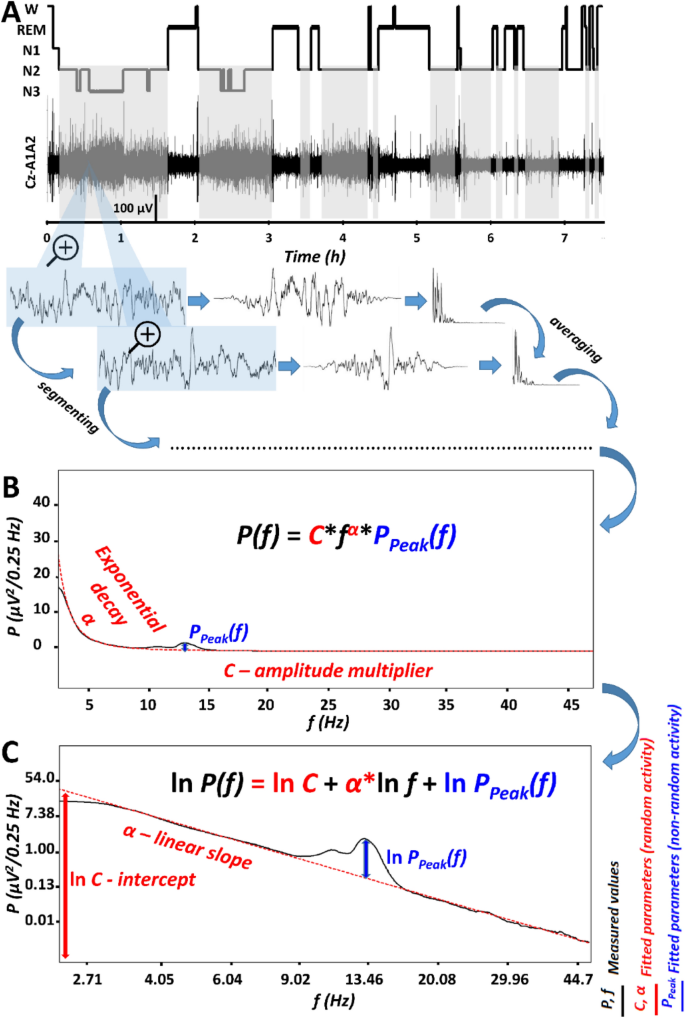

These are found with a tape measure, and often marked with a grease pencil, or "China marker." Specific anatomical landmarks are used for the essential measuring and positioning of the EEG electrodes. This EEG montage may be extended to utilize T3-T4, P3-P4, as well as others, if an extended or "seizure montage" is called for. Cz and Fz are 'ground' or 'common' reference points for all EEG and EOG electrodes, and A1-A2 are used for contralateral referencing of all EEG electrodes. In basic polysomnography, F3, F4, Fz, Cz, C3, C4, O1, O2, A1, A2 (M1, M2), are used.


The "A" (sometimes referred to as "M" for mastoid process) refers to the prominent bone process usually found just behind the outer ear (less prominent in children and some adults). Chin, or EMG ( electromyogram) electrodes are more commonly just referred to with "right," "left," and "reference," or "common," as there are usually only three placed, and they can be differentially referenced from the EEG and EOG reference sites. Note that the required number of EEG electrodes, and their careful, measured placement, increases with each clinical requirement and modality.Įven-numbered electrodes (2,4,6,8) refer to electrode placement on the right side of the head, whereas odd numbers (1,3,5,7) refer to those on the left this applies to both EEG and EOG ( electrooculogram measurements of eyes) electrodes, as well as ECG ( electrocardiography measurements of the heart) electrode placement. "Z" electrodes are often utilized as 'grounds' or 'references,' especially in polysomnography sleep studies, and diagnostic/clinical EEG montages meant to represent/diagnose epileptiform seizure activity, or possible clinical brain death. These electrodes will not necessarily reflect or amplify lateral hemispheric cortical activity as they are placed over the corpus callosum, and do not represent either hemisphere adequately. There are also (Z) sites: A "Z" (zero) refers to an electrode placed on the midline sagittal plane of the skull, (FpZ, Fz, Cz, Oz) and is present mostly for reference/measurement points. Note that there is no "central lobe" due to their placement, and depending on the individual, the "C" electrodes can exhibit/represent EEG activity more typical of frontal, temporal, and some parietal-occipital activity, and are always utilized in polysomnography sleep studies for the purpose of determining stages of sleep. Specific anatomical locations of the ear used include the tragus, the auricle and the mastoid.Įach electrode placement site has a letter to identify the lobe, or area of the brain it is reading from: pre-frontal (Fp), frontal (F), temporal (T), parietal (P), occipital (O), and central (C). Most other common measurements ('landmarking methods') start at one ear and end at the other, normally over the top of the head. For example, a measurement is taken across the top of the head, from the nasion to inion. The "10" and "20" refer to the fact that the actual distances between adjacent electrodes are either 10% or 20% of the total front–back or right–left distance of the skull. age, prescription drugs, somatic diagnoses, hx of neurologic insults/injury/trauma, and substance abuse) (These patterns might vary, and can be affected by multiple extrinsic factors, i.e. The system is based on the relationship between the location of an electrode and the underlying area of the brain, specifically the cerebral cortex.ĭuring sleep and wake cycles, the brain produces different, objectively recognized and distinguishable electrical patterns, which can be detected by electrodes on the skin. This method was developed to maintain standardized testing methods ensuring that a subject's study outcomes (clinical or research) could be compiled, reproduced, and effectively analyzed and compared using the scientific method. The 10–20 system or International 10–20 system is an internationally recognized method to describe and apply the location of scalp electrodes in the context of an EEG exam, polysomnograph sleep study, or voluntary lab research. Electrode locations of International 10-20 system for EEG (electroencephalography) recording


 0 kommentar(er)
0 kommentar(er)
